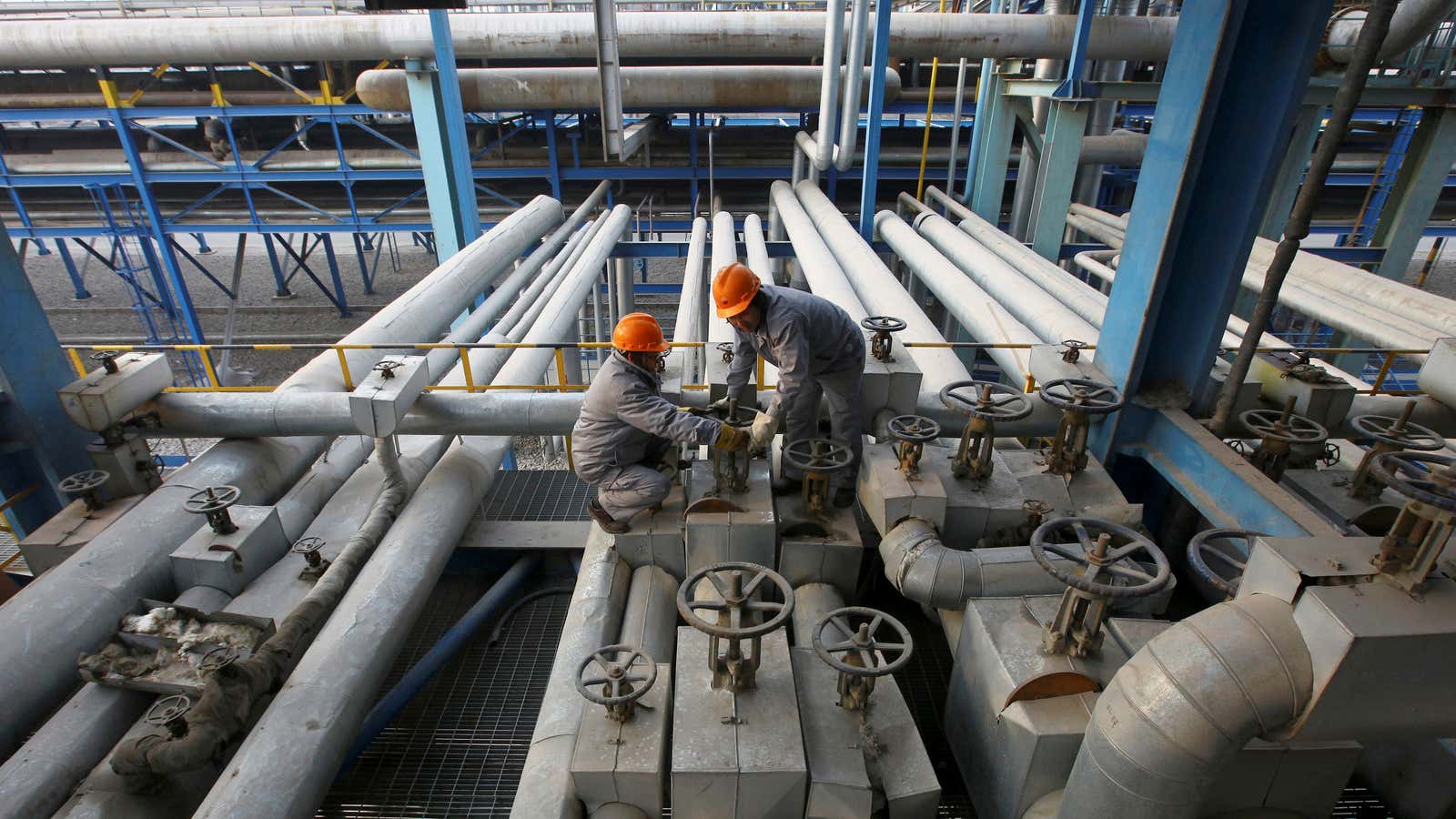The US, home to more oil refineries than any other country, lost its title to China as the world’s largest refiner of raw crude oil in 2020. China began refining more crude oil into gasoline and other products for the first time during the pandemic, according to new data from the US Energy Information Administration (EIA), and it has largely remained in the lead.
The upset is largely due to the pandemic-related drop in demand for gasoline and jet fuel in the US, EIA reported. With fewer customers, low prices, and much less crude as US producers curbed drilling, refiners had little reason to operate. But Chinese oil refiners were primed to respond in the opposite way to oil price fluctuations: When oil prices fall, the government pays Chinese refiners to ramp up production. So while the pandemic-related refining stall in China was short-lived, by the time oil prices hit a record low in April 2020, refining activity had surged ahead of the US for the first time.
That’s a bad omen for the world’s plastic pollution crisis. China is eager to lower costs for virgin plastic production (rather than using recycled materials), and the pandemic gave that effort a big boost. China currently has at least four major new refineries under construction, and up to 80% of that planned capacity will be dedicated to producing plastic feedstocks like ethylene and propylene by 2025. China’s policy, EIA said, is motivated in part by “a long-term plan to independently meet its feedstock needs for plastic production and shift away from importing feedstocks.”
US oil production is expected to fall again this year, despite rising oil prices, although demand for gasoline is rising, and US refining activity is expected to top China by the end of 2021, EIA projects. In the meantime, the rise in domestic refining has already given Chinese plastic producers an edge: Global prices for plastics feedstocks shot to record highs after a winter storm in Texas this February (where most US refineries are located) shut down more than half of US plastic feedstock production capacity.
